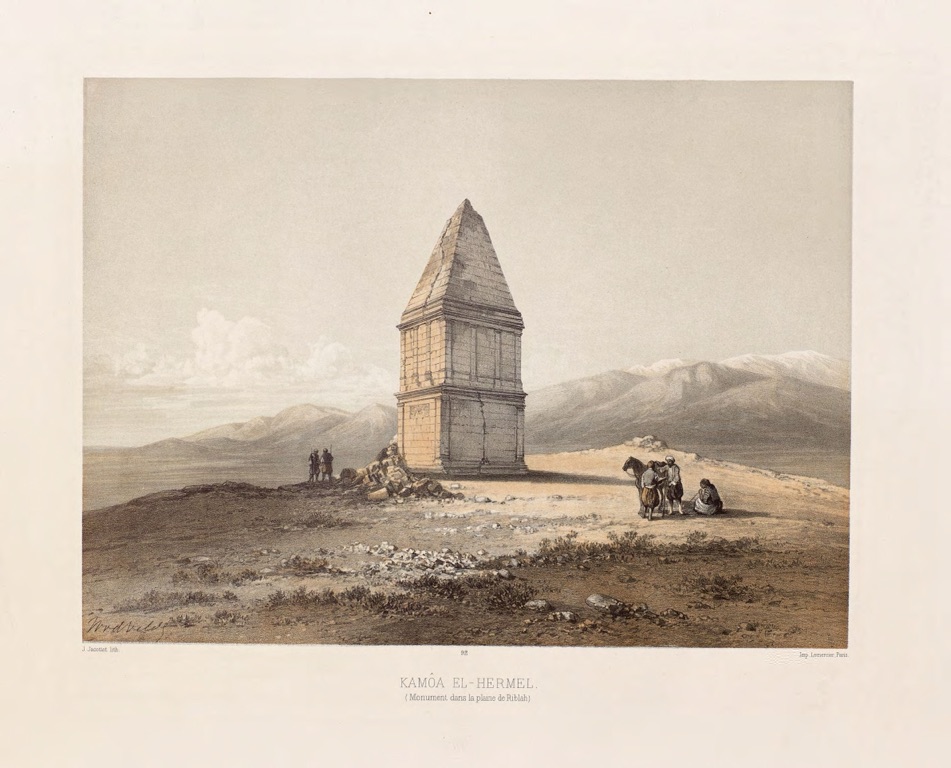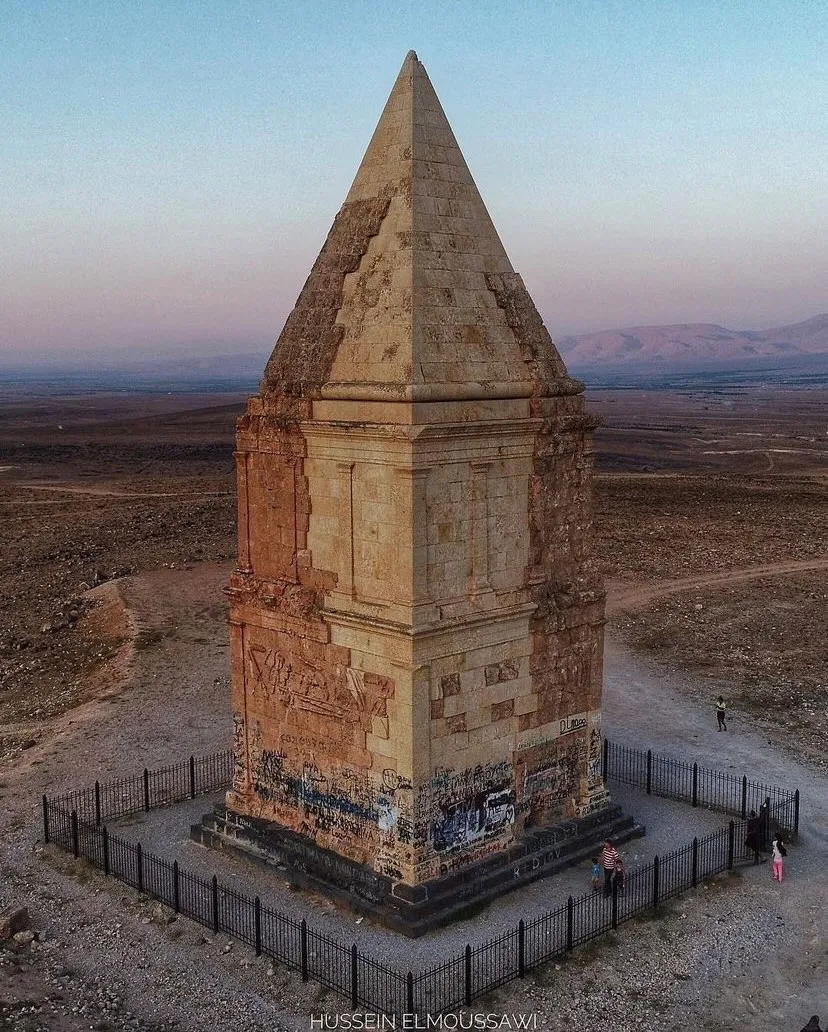Kamouh el Hermel, also known as the Pyramid of Hermel or Hermel Pyramid, is a fascinating ancient monument located in the Beqaa Valley of Lebanon. This intriguing structure, shaped like a truncated pyramid, stands as a testament to the region’s rich historical tapestry. It is one of several such monuments in the area, which together form a unique archaeological landscape. Despite its historical significance, many aspects of Kamouh el Hermel remain shrouded in mystery, including its exact purpose and the identity of its builders.
Get your dose of History via Email
Historical Background of Kamouh el Hermel
The discovery of Kamouh el Hermel is not well-documented, but it has been known to the local population for centuries. It was Western scholars in the 19th century who brought it to the attention of the wider world. The monument’s origins trace back to the ancient civilizations that flourished in the Beqaa Valley. While the exact date of construction is uncertain, it is believed to have been built during the time of the Phoenicians or the Roman Empire’s presence in the region.
Archaeological evidence suggests that the Phoenicians, renowned for their seafaring and trade, were the likely builders of this monument. However, some scholars argue that it may have been constructed under Roman influence. The purpose of Kamouh el Hermel is still debated, but it may have served as a religious site or a commemorative monument.
Over the centuries, the Beqaa Valley has seen various groups and civilizations, which may have influenced the site. However, there is no clear evidence that Kamouh el Hermel was inhabited or repurposed by later cultures. Its remote location has helped preserve its form, free from extensive urban development.
While not the scene of any major historical events, Kamouh el Hermel is significant for its contribution to our understanding of ancient Levantine cultures. Its design and construction techniques offer insights into the engineering skills of its creators. The monument stands as a silent witness to the past, offering a tangible connection to the region’s ancient inhabitants.
The site has not been extensively excavated, which means that much of its history remains locked within its stones. Future archaeological work could reveal more about the people who built it and their reasons for doing so. For now, Kamouh el Hermel remains an enigmatic piece of Lebanon’s archaeological puzzle.

About Kamouh el Hermel
Kamouh el Hermel is characterized by its pyramidal shape, which distinguishes it from the surrounding landscape. The structure is made of local limestone, a material commonly used in ancient construction in the region. Its size and the precision of its craftsmanship are particularly noteworthy, indicating the skill of its builders.
The monument’s design features a square base with sides that rise to form a truncated peak. This shape is reminiscent of the ziggurats found in Mesopotamia, although there are significant differences in both purpose and construction techniques. The pyramid’s surface is adorned with intricate carvings, some of which have eroded over time.
One of the most striking features of Kamouh el Hermel is the relief that decorates one side of the pyramid. It depicts a hunting scene, which some scholars believe could provide clues to the monument’s purpose or the identity of its patrons. The relief is a valuable piece of art that contributes to the site’s historical importance.
The construction methods used to build Kamouh el Hermel are not fully understood, but they likely involved manual labor and simple machines available at the time. The precise alignment and fitting of the stones suggest a high level of planning and expertise in stonemasonry.
Despite the wear of time, Kamouh el Hermel has retained much of its original form. This resilience speaks to the quality of its construction and the durability of its materials. The monument’s preservation allows for ongoing study and appreciation of this ancient wonder.
Theories and Interpretations
Several theories have been proposed regarding the purpose of Kamouh el Hermel. Some suggest it was a religious site, possibly linked to ancient funerary practices. Others believe it may have served as a landmark or a territorial marker, signifying control over the surrounding lands.
The mysteries of Kamouh el Hermel extend to its cultural significance. The hunting scene depicted in the relief has led some to speculate that the monument celebrated a royal hunt or commemorated a significant event. However, without written records, these interpretations remain speculative.
Matching Kamouh el Hermel to historical records is challenging due to the scarcity of contemporary texts. The monument’s style and iconography provide some clues, but definitive connections to known historical events or figures are lacking.
Dating Kamouh el Hermel has been attempted through stylistic analysis and comparison with other archaeological sites. While precise dating is difficult, the monument is generally attributed to the period between the Phoenicians and the Roman Empire’s influence in the region.
Further research, including potential excavation and advanced dating methods, could shed light on the many unanswered questions surrounding Kamouh el Hermel. For now, it remains an enigmatic structure, inviting both scholarly inquiry and the wonder of visitors.
At a glance
Country: Lebanon
Civilization: Unknown
Age: Uncertain, possibly between the Phoenician era and the Roman period
Conclusion and Sources
Reputable sources used in the creation of this article:
- Wikipedia: https://en.wikipedia.org/wiki/Hermel_Pyramid

